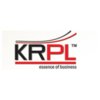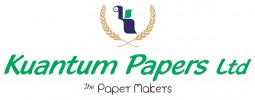Filter interviews by
JK Paper Graduate Engineer Trainee (Get) Interview Questions, Process, and Tips
JK Paper Graduate Engineer Trainee (Get) Interview Experiences
2 interviews found
I applied via Campus Placement
Interview Questionnaire
3 Questions
- Q1. 1.in industrial applications how the speed reduction is achieved.
- Ans.
Speed reduction in industrial applications
Speed reduction is achieved using gearboxes or pulleys and belts
Gearboxes are used for high torque applications
Pulleys and belts are used for low torque applications
Variable frequency drives (VFDs) can also be used for speed control
Examples include conveyor belts, fans, pumps, and mixers
- Q2. 2.what is fully developed flow can you explain in depth with math?
- Ans.
Fully developed flow is a state where the velocity profile of a fluid remains constant over time and distance.
Fully developed flow occurs in long pipes where the fluid has enough time to reach a steady state.
In this state, the velocity profile is parabolic and the flow is laminar.
The Reynolds number is used to determine if the flow is fully developed or not.
Mathematically, fully developed flow is described by the Hagen...
- Q3. 3.can you give little insight about navier Stokes equation
- Ans.
Navier-Stokes equation is a mathematical formula that describes the motion of fluids.
It is used to predict the velocity and pressure distribution of fluids in motion.
It is a set of partial differential equations that describe the conservation of mass, momentum, and energy.
It is widely used in engineering and physics to study fluid dynamics.
It is named after Claude-Louis Navier and George Gabriel Stokes, who first deriv...
Interview Preparation Tips
Skills evaluated in this interview
I applied via Campus Placement and was interviewed in Mar 2020. There were 5 interview rounds.
Interview Questionnaire
5 Questions
- Q1. Tell me something about yourself
- Q2. What is endothermic and exothermic reaction?
- Ans.
Endothermic reactions absorb heat while exothermic reactions release heat.
Endothermic reactions require energy input to proceed while exothermic reactions release energy.
Endothermic reactions feel cold while exothermic reactions feel hot.
Examples of endothermic reactions include melting ice and evaporating water while examples of exothermic reactions include burning wood and rusting iron.
- Q3. What is material balance
- Ans.
Material balance is a concept used in chemical engineering to track the flow of materials through a process.
It involves accounting for all the inputs and outputs of a system
It is used to ensure that the process is operating efficiently and effectively
It can be used to identify areas where losses are occurring and to optimize the process
Examples include tracking the flow of raw materials into a chemical plant and the fl
- Q4. Tell me about your project?
- Q5. Will you comfortable in odisha?
Interview Preparation Tips
Top trending discussions






Interview questions from similar companies

I applied via Campus Placement and was interviewed before Feb 2021. There were 2 interview rounds.

Logical Questions
Interview Preparation Tips

Assistant Manager Interview Questions & Answers
K.R.Pulp & Papersposted on 24 May 2024
(1 Question)
- Q1. SWOT analysis about self and paper industries related questions

Assistant Manager Interview Questions & Answers
Bilt Graphic Paper Productsposted on 27 Mar 2024
(3 Questions)
- Q1. General questions
- Q2. Introduce yourself
- Q3. Technical questions
Interview Preparation Tips
Rest explicitly don't mention salary and don't provide response later on.

I appeared for an interview in Jan 2022.

(1 Question)
- Q1. Based on your resume. They will ask questions
(1 Question)
- Q1. Salary should be under the cycle
Interview Preparation Tips

Sales Officer Interview Questions & Answers
N R Agarwal Industriesposted on 20 Oct 2023

(1 Question)
- Q1. How do you find your self in 5 year
(1 Question)
- Q1. How can you resolve the problem related to production
- Ans.
To resolve production problems, I would analyze the root cause, collaborate with relevant departments, implement corrective actions, and monitor progress.
Analyze the root cause of the production problem
Collaborate with relevant departments such as production, quality control, and maintenance
Implement corrective actions based on the analysis
Monitor the progress of the implemented solutions to ensure effectiveness

I applied via Recruitment Consultant and was interviewed in Jun 2021. There were 4 interview rounds.
Interview Questionnaire
1 Question
- Q1. Fully technical
Interview Preparation Tips

I applied via Referral and was interviewed in Nov 2021. There were 3 interview rounds.

(2 Questions)
- Q1. About work experience, Expected Salary and present salary.
- Q2. About company & Benefits provided by Previous Employer.
(1 Question)
- Q1. How recover loss on your Area & how to handle manpower in all areas?
- Ans.
To recover loss on my area, I would analyze the reasons for the loss and implement strategies to improve performance. To handle manpower, I would ensure proper training and communication.
Analyze reasons for loss and implement strategies to improve performance
Identify areas of improvement and set achievable goals
Ensure proper training and communication for manpower
Regularly monitor and evaluate performance
Provide incent
Interview Preparation Tips
- Sheeter
- Losses
- System Implementation
- Manpower Management

I applied via Company Website and was interviewed before Oct 2022. There were 5 interview rounds.

They are giving 50 Mark's shirt questions
(2 Questions)
- Q1. Technical round is there one to one interview
- Q2. How centrifugal pump work What is w33 etc
- Ans.
Centrifugal pumps work by converting rotational kinetic energy into hydrodynamic energy to move fluid through the pump.
Centrifugal pumps use a rotating impeller to create a low pressure at the inlet and high pressure at the outlet, causing fluid to flow through the pump.
The impeller spins at high speeds, imparting kinetic energy to the fluid which is then converted to pressure energy as it exits the pump.
The pump housi...
(2 Questions)
- Q1. How much salary you want
- Q2. Less salary we can pay as you are local
Technical head and vp asking questions and assessment
Interview Preparation Tips
JK Paper Interview FAQs
Tell us how to improve this page.
JK Paper Interviews By Designations
- JK Paper Assistant Manager Interview Questions
- JK Paper Sales Officer Interview Questions
- JK Paper Mechanical Engineer Interview Questions
- JK Paper Operative Interview Questions
- JK Paper Executive Interview Questions
- JK Paper Graduate Engineer Trainee (Get) Interview Questions
- JK Paper Senior Executive Interview Questions
- JK Paper Graphic Designer Interview Questions
- Show more
Interview Questions for Popular Designations
- Graduate Apprentice Trainee Interview Questions
- Graduate Apprenticeship Trainee Interview Questions
- Graduate Trainee Interview Questions
- Graduate Engineer Interview Questions
- Production Graduate Engineer Trainee Interview Questions
- Graduate Student Interview Questions
- Graduate Apprentice Interview Questions
- Post Graduate Engineer Trainee [pget] Interview Questions
- Show more
Interview Questions from Similar Companies
Fast track your campus placements
JK Paper Graduate Engineer Trainee (Get) Reviews and Ratings
based on 3 reviews
Rating in categories
|
Assistant Manager
119
salaries
| ₹6.7 L/yr - ₹16.5 L/yr |
|
Senior Engineer
74
salaries
| ₹4.9 L/yr - ₹10 L/yr |
|
Senior Executive
63
salaries
| ₹5.1 L/yr - ₹10 L/yr |
|
Mechanical Engineer
56
salaries
| ₹2 L/yr - ₹8 L/yr |
|
Deputy Manager
51
salaries
| ₹8.9 L/yr - ₹18 L/yr |

Emami Paper Mills

Bilt Graphic Paper Products

Andhra Paper

Orient Paper Mill
- Home >
- Interviews >
- JK Paper Interview Questions >
- JK Paper Graduate Engineer Trainee (Get) Interview Questions














